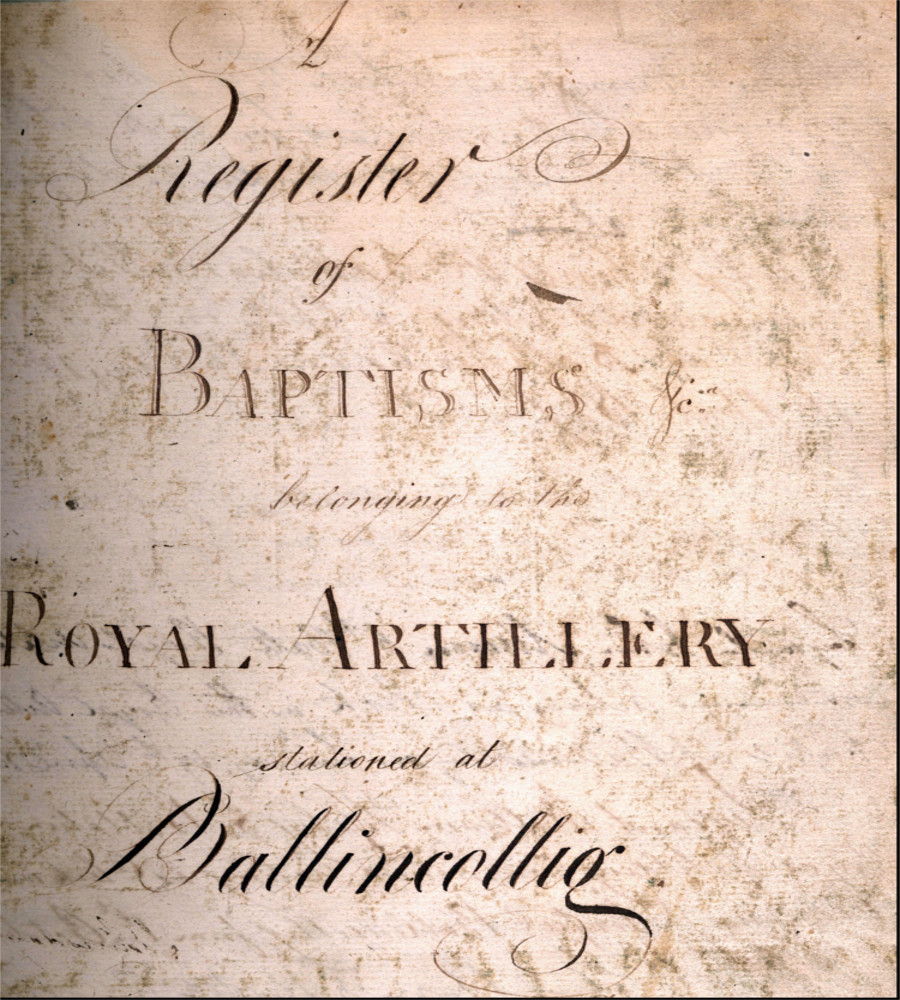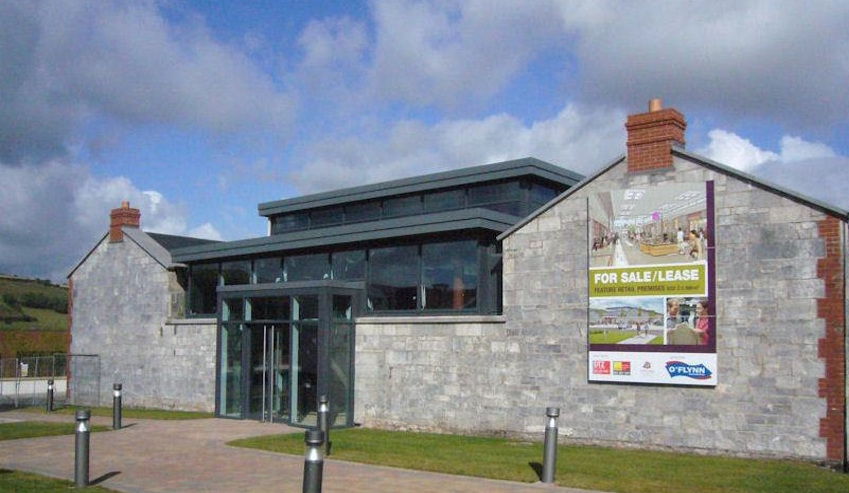The value of Church of Ireland registers: Ballincollig military men & their families 1810-1922
The details of some 2,187 people – soldiers and their families – recorded in the registers of Ballincollig Garrison Chapel have been recovered using the registers of baptisms, marriages and burials between 1810 and 1922 now in the safe custody of the Representative Church Body Library in Dublin. Further research using a variety of additional resources has further unlocked their hidden stories.
The work has been carried out by local historian Anne Donaldson, who over the course of several years diligently extracted all of the names and details of the soldiers mentioned in the garrison chapel registers (a combined register of baptisms 1810-1864; marriages 1823-1842 and burials 1813-1882; a register of baptisms 1865-1921; and a register of burials 1871-1920). Then, using a variety of other primary sources, she fleshed out details about them and their families, all of which data she has inputted to a detailed spreadsheet, a PDF copy of which is now available online at this link: www.ireland.anglican.org/library/archive

The town of Ballincollig is situated in the Church of Ireland parish of Carrigrohane, thus explaining the survival of the registers in Carrigrohane parish church, where they have been carefully maintained through the centuries. The background to the military presence at Ballincollig may be traced to the early 19th century and strategic importance of the town for milling. After the defeat of Napoleon, the mills were allowed fall into disrepair for 20 years before being sold on to a commercial developer at half the original price but the military presence at Ballincollig remained, ending only following Irish independence in 1922. This event is very precisely captured on the last pages of the chapel preachers’ book, when the last chaplain recorded: ‘The XIX, the Green Howards, Alexandra Princess of Wales’s own (Yorkshire) Regiment together with the R.A.O.C. [Royal Army Ordnance Corps] evacuated Ballincollig Military Barracks on Wednesday morning 17th May 1922 at 11 o’c’.
Up until this point, Ballincollig had served mainly as an artillery barracks – indeed the Southern Area Command was based here for a time, but many other regiments came and went too. Whilst every movement of these men was dutifully recorded in military records, with the passage of time, fires and war, much of the valuable information was lost. In this context the survival of church records including the registers of baptism, marriage and burial from the garrison chapel, now securely housed and available in the context of many other parish register collections at the RCB Library (see http://tinyurl.com/yal2ezjr) provides a window to hidden histories.
Speaking on the worldwide launch of her work, Anne Donaldson said: ‘As a local historian with a passionate interest to recover the past, I set myself the task of trying to counteract the sad deficiency of lost evidence. This work has been underpinned by two aspirations: firstly to compile a record of as many names as possible for research by historians, genealogists and family members, which through the Church of Ireland website is fully searchable. Secondly the project is about reconciliation, celebrating Ireland’s rich and varied multiculturalism, and cherishing different identities.’
Speaking from the RCB Library, Dr Susan Hood, Librarian and Archivist, said: ‘Anne’s work and effort demonstrate what one person with knowledge and determination can achieve to unlock information from Church of Ireland registers kept safe through the generations, now shared for a worldwide audience. It has been a delight for the Library to collaborate with her on this project’.

The rector of Carrigrohane Union, the Revd Ian Jonas, further endorsed the Ballincollig Military Men Project. Mr Jonas remarked: ‘Anne Donaldson’s painstaking research with the old registers of the garrison church in Ballincollig has been a labour of love. We are delighted that what she has mined now comes to the light of day for researchers everywhere. Interestingly, Anne found that what we consider to be the modern idea of multiculturalism was a feature of Irish life in the 19th Century.
‘The soldiers who served in the British Army came from diverse backgrounds, not just Protestant and British but Irish and Roman Catholic, as well as others. This summer, in responding to a diverse society with the Gospel of Christ, the Church of Ireland is returning to Ballincollig with a new parish centre, having just bought the gun store at the powder mills. This is the very place where those men recorded in the registers of the garrison chapel were stationed to protect the gunpowder. Once this new centre is up and running, there will be no guards defending explosives, just a warm welcome to share in the blessings of God amongst us.’
For further information about the Ballincollig Military Men Project, contact Anne Donaldson: adonaldson@iol.ie
More information about the Library and its collections of parish registers is available from Dr Susan Hood (susan.hood@rcbdub.org)